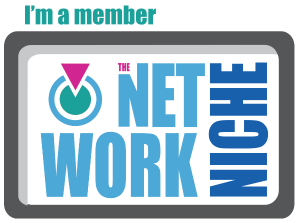Have you ever had to deal with a micro-aggression at work? Maybe it was a slight from a co-worker, or a snub from management after a well-done project. In some of the worst-case scenarios, you may have had to deal with harassment or even intimidation. Microagressions are verbal, behavioral, and environmental indignities communicating hostile, derogatory, or negative racial slights and insults to a target person or group. They occur in workplaces all around the world, and can be reinforced by company culture and tone at the top, thrus breeding toxic work cultures. They are also quite painful and complex to address and deal with…
According to a June 23-July 6, 2020 Gallup Panel survey, Black Americans constitute the largest racial group to experience and report micro-aggressions in the workplace. 9% even report having been insulted or called names, and 5% victimized through harassment and threats. Among working women, the 2018 Women in the Workplace report published by Leanin.org shows 64% of women deal with micro-aggressions as a reality at work. Black women are reported to face more varied micro-aggressions overall.While these issues disproportionately affect women, males are not exempt from these either.

Addressing micro-aggressions constructively requires going through a process of introspection, communication and decision, including:
1- Determining how much time and energy to devote to said micro-aggression. Responding to every incident can be draining and demoralizing, and even hurt our careers and well-being. Rather, discerning when and how to address micro- aggressions based on the relationships, feelings and perceptions involved can be way more effective.
2- If and when confronting it, preparing oneself and the other party to experience feelings of awkwardness and discomfort can make the communication more effective. Let’s remember that many incidences of micro-aggressions stem from ignorance, as well as lack of boundaries and appropriate education on the subject. This can make confronting the issue at hand not only necessary, but part of a larger educational process we should all engage in. However, it’s certainly an uncomfortable, awkward and even at times painful one. Mentally preparing to face the discomfort and awkwardness of such situations can ease the process.
3- Clarify the situation: Ensuring that all parties understand what’s at stake can help make the conversation and resolution more powerful and the positive effects more long-lasting too. There are many misunderstandings that can be involved in micro-aggressions, due to their subjective and personal nature. Clarifying the situation and understanding of it from all parties involved is a crucial step in addressing it constructively.
4- Last but not least, get some closure by deciding what impact this will have on your life and work. Often we carry the weight of micro-aggressions with us too long instead of addressing them and healing from them. As a result, this often invisible and crushing weight hinders our potential and capabilities, in addition to hurting our mental and emotional state. Deciding what impact we are willing to give micro-aggressions, and how to deal with getting the closure needed is absolutely indispensable. For some, it may mean engaging in service, healing through therapy, or looking for safer spaces and networks.
Overall, dealing with micro-aggressions at work is a process. By deciding how much time and energy to devote to these, mentally preparing for the awkwardness of confrontation, and striving to clarify the situation and get closure, we can not only heal but also constructively educate ourselves and others.
How do you deal with micro-aggressions at work?
The Corporate Sister.







